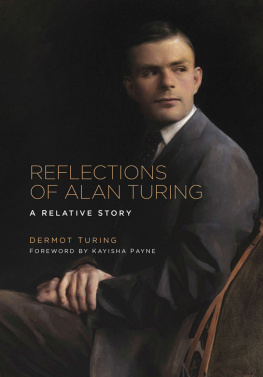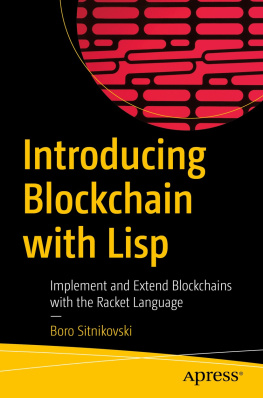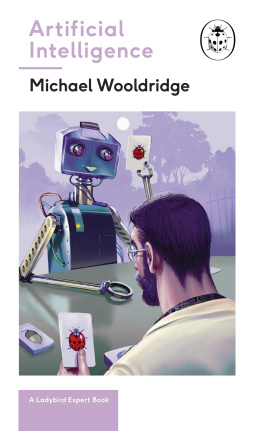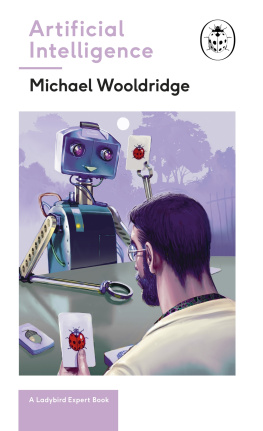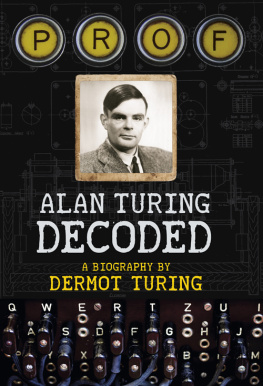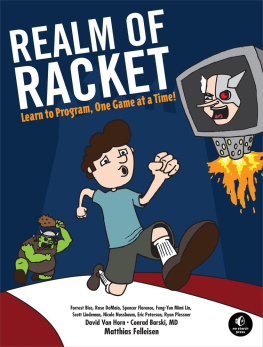James W. Stelly - Racket Programming the Fun Way: From Strings to Turing Machines
Here you can read online James W. Stelly - Racket Programming the Fun Way: From Strings to Turing Machines full text of the book (entire story) in english for free. Download pdf and epub, get meaning, cover and reviews about this ebook. year: 2021, publisher: No Starch Press, genre: Computer. Description of the work, (preface) as well as reviews are available. Best literature library LitArk.com created for fans of good reading and offers a wide selection of genres:
Romance novel
Science fiction
Adventure
Detective
Science
History
Home and family
Prose
Art
Politics
Computer
Non-fiction
Religion
Business
Children
Humor
Choose a favorite category and find really read worthwhile books. Enjoy immersion in the world of imagination, feel the emotions of the characters or learn something new for yourself, make an fascinating discovery.

- Book:Racket Programming the Fun Way: From Strings to Turing Machines
- Author:
- Publisher:No Starch Press
- Genre:
- Year:2021
- Rating:3 / 5
- Favourites:Add to favourites
- Your mark:
- 60
- 1
- 2
- 3
- 4
- 5
Racket Programming the Fun Way: From Strings to Turing Machines: summary, description and annotation
We offer to read an annotation, description, summary or preface (depends on what the author of the book "Racket Programming the Fun Way: From Strings to Turing Machines" wrote himself). If you haven't found the necessary information about the book — write in the comments, we will try to find it.
Racket Programming the Fun Way: From Strings to Turing Machines — read online for free the complete book (whole text) full work
Below is the text of the book, divided by pages. System saving the place of the last page read, allows you to conveniently read the book "Racket Programming the Fun Way: From Strings to Turing Machines" online for free, without having to search again every time where you left off. Put a bookmark, and you can go to the page where you finished reading at any time.
Font size:
Interval:
Bookmark:
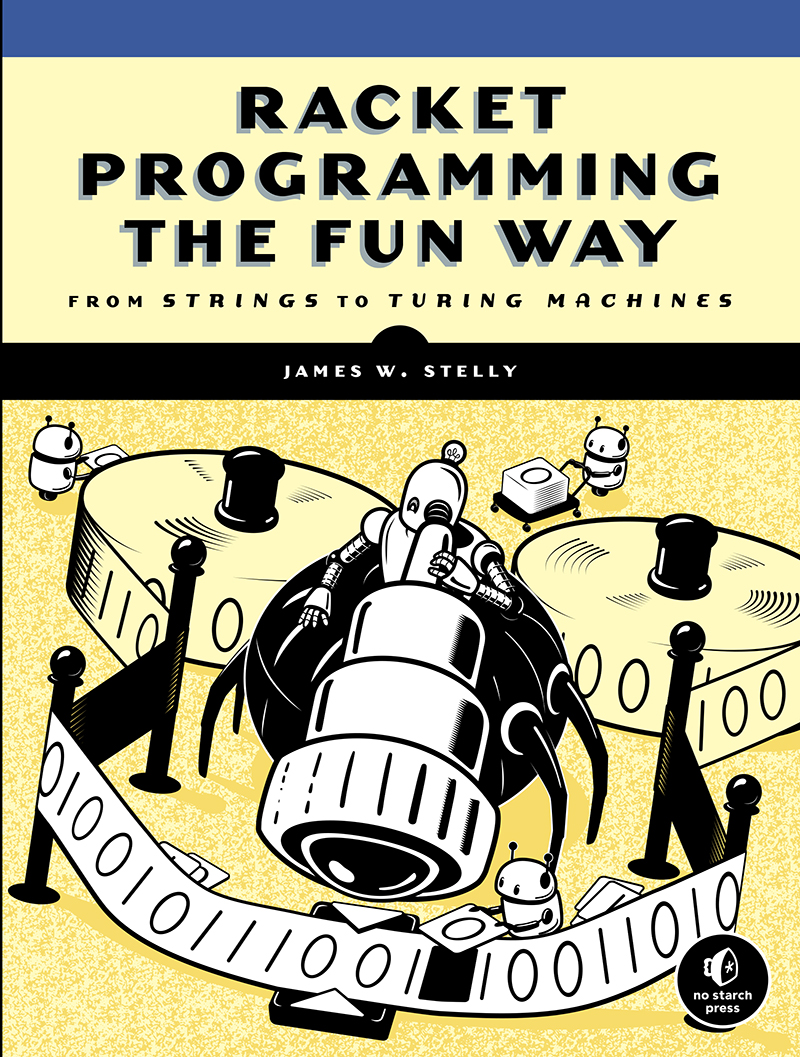
From Strings to Turing Machines
by James W. Stelly

San Francisco
RACKET PROGRAMMING THE FUN WAY. Copyright 2021 by James W. Stelly.
All rights reserved. No part of this work may be reproduced or transmitted in any form or by any means, electronic or mechanical, including photocopying, recording, or by any information storage or retrieval system, without the prior written permission of the copyright owner and the publisher.
ISBN-13: 978-1-7185-0082-2 (print)
ISBN-13: 978-1-7185-0083-9 (ebook)
Publisher: William Pollock
Executive Editor: Barbara Yien
Production Editor: Dapinder Dosanjh
Developmental Editor: Alex Freed
Interior Design: Octopod Studios
Cover Illustration: Gina Redman
Technical Reviewer: Matthew Flatt
Copyeditor: Chris Cartwright
Proofreader: Emelie Battaglia
For information on distribution, translations, or bulk sales, please contact No Starch Press, Inc. directly:
No Starch Press, Inc.
245 8th Street, San Francisco, CA 94103
phone: 415.863.9900; fax: 415.863.9950;
www.nostarch.com
Library of Congress Cataloging-in-Publication Data
Names: Stelly, James W., author.
Title: Racket programming the fun way: from strings to turing machines / by James W. Stelly.
Description: San Francisco : No Starch Press, [2021]. | Includes
bibliographical references and index.
Identifiers: LCCN 2020022884 (print) | LCCN 2020022885 (ebook) | ISBN
9781718500822 | ISBN 9781718500839 (ebook) | ISBN 1718500822
Subjects: LCSH: Racket (Computer program language) | LISP (Computer program
language) | Computer programming.
Classification: LCC QA76.73.R33 S 2020 (print) | LCC QA76.73.R33 (ebook)
| DDC 005.13/3dc23
LC record available at https://lccn.loc.gov/2020022884
LC ebook record available at https://lccn.loc.gov/2020022885
No Starch Press and the No Starch Press logo are registered trademarks of No Starch Press, Inc. Other product and company names mentioned herein may be the trademarks of their respective owners. Rather than use a trademark symbol with every occurrence of a trademarked name, we are using the names only in an editorial fashion and to the benefit of the trademark owner, with no intention of infringement of the trademark.
The information in this book is distributed on an As Is basis, without warranty. While every precaution has been taken in the preparation of this work, neither the author nor No Starch Press, Inc. shall have any liability to any person or entity with respect to any loss or damage caused or alleged to be caused directly or indirectly by the information contained in it.
I dedicate this book to my mom and dad who patiently (and at times not so patiently) endured my many childhood pranks.
James W. Stelly has been dabbling with computers as both a hobbyist and professional for over four decades. He has degrees in both computer science and mathematics from the University of Houston. As a hobbyist, his projects include robotics using Arduino and Raspberry Pi along with numerous explorations of programming languages ranging from machine language to C++ (and many others). His day job (now part time since retirement) is developing a line of business applications primarily aimed at record keeping and data management.
Matthew Flatt is a professor in the School of Computing at the University of Utah, where he works on extensible programming languages, run-time systems, and applications of functional programming. He is one of the developers of the Racket programming language and a co-author of the introductory programming textbook How to Design Programs.
RACKET BASICS
ARITHMETIC AND OTHER NUMERICAL PARAPHERNALIA
FUNCTION FUNDAMENTALS
PLOTTING, DRAWING, AND A BIT OF SET THEORY
GUI: GETTING USERS INTERESTED
DATA
SEARCHING FOR ANSWERS
LOGIC PROGRAMMING
COMPUTING MACHINES
TRAC: THE RACKET ALGEBRAIC CALCULATOR
A
NUMBER BASES
B
SPECIAL SYMBOLS
First, let me thank the folks responsible for Racket. They have created a truly remarkable piece of software. The care and effort that went into producing it has to be incalculable.
I would like to extend my deepest gratitude and thanks to my editors at No Starch, Alex Freed and Athabasca Witschi, as well as my technical reviewer, Matthew Flatt. They made literally dozens of helpful suggestions for improvements as well as corrections. Any remaining flaws are entirely of my own making.
Finally, let me thank my wife for her patience. Her view of me was primarily of the back of my head while I was working on this book.
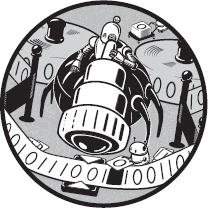
In this book we explore using Racket (a language descended from the Scheme family of programming languageswhich in turn descended from Lisp) and DrRacket, a graphical environment that allows us to make the most of all the features of Racket. One of the attractive features of this ecosystem is that its equipped with a plethora of libraries that cover a wide range of disciplines. The developers describe Racket as a system that has batteries included. This makes it an ideal platform for the interactive investigation of various topics in computer science and mathematics.
Given Rackets Lisp pedigree, we would be remiss to omit functional programming, so we will definitely explore it in this text. Racket is no one-trick pony though, so we will also explore imperative, object oriented, and logic programming along the way. Also on the computer science front, we will look at various abstract computing machines, data structures, and a number of search algorithms as related to solving some problems in recreational mathematics. We will finish the book by building our own calculator, which will entail lexical analysis using regular expressions, defining the grammar using extended BackusNaur form (EBNF), and building a recursive descent parser.
Racket features extensive and well-written documentation, which includes Quick: An Introduction to Racket with Pictures, the introductory Racket Guide, and the thorough Racket Reference. Various other toolkits and environments also have separate documentation. Within DrRacket these items can be accessed through the Help menu.
Racket is available for a wide variety of platforms: Windows, Linux, macOS, and Unix. It can be downloaded from the Racket website via the link https://download.racket-lang.org/. Once downloaded, installation simply entails running the downloaded executable on Windows, .dmg file on macOS, or shell script on Linux. At the time of writing, the current version is 7.8. Examples in the book will run on any version 7.0 or later. They will likely run on earlier versions as well, but since the current version is freely available there is really no need to do so. When the DrRacket environment is first launched, the user will be prompted to select a Racket language variant. The examples in this book all use the first option in the pop-up dialog box (that is, the one that says The Racket Language).
Font size:
Interval:
Bookmark:
Similar books «Racket Programming the Fun Way: From Strings to Turing Machines»
Look at similar books to Racket Programming the Fun Way: From Strings to Turing Machines. We have selected literature similar in name and meaning in the hope of providing readers with more options to find new, interesting, not yet read works.
Discussion, reviews of the book Racket Programming the Fun Way: From Strings to Turing Machines and just readers' own opinions. Leave your comments, write what you think about the work, its meaning or the main characters. Specify what exactly you liked and what you didn't like, and why you think so.

